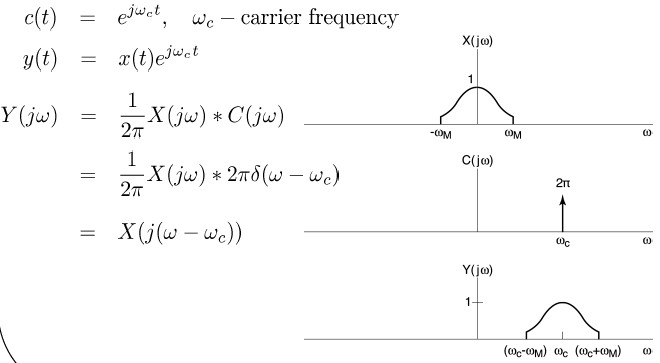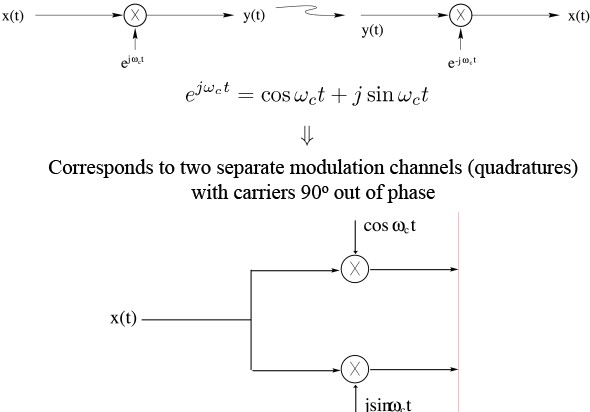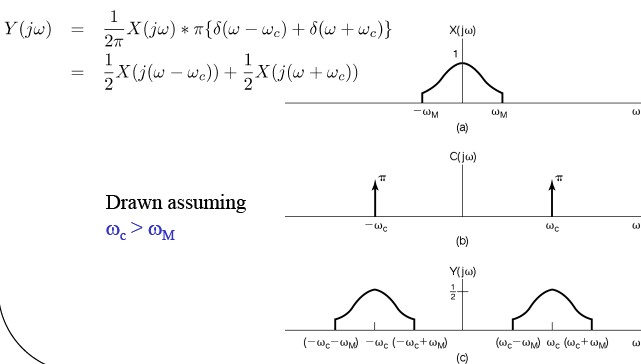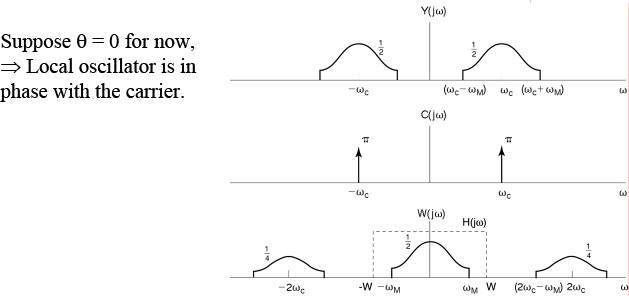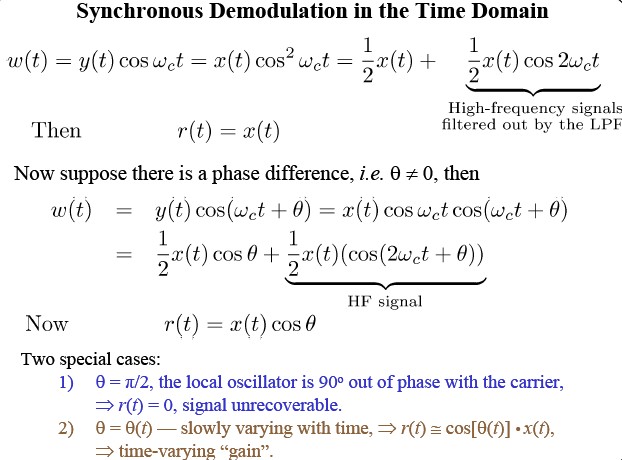(→Synchronous Demodulation (with phase error) in the Frequency DomainAgain) |
(→Synchronous Demodulation (with phase error) in the Frequency DomainAgain) |
||
| (2 intermediate revisions by the same user not shown) | |||
| Line 36: | Line 36: | ||
Demodulating signal has phase difference θw.r.t.the modulating signal | Demodulating signal has phase difference θw.r.t.the modulating signal | ||
| − | <math> | + | <math>cos(\omega_{C}t+\theta)= \frac{1}{2}e^{j\theta}e^{j\omega_{c}t}+\frac{1}{2}e^{-j\theta}e^{-j\omega_{c}t}</math> |
| − | ====> | + | fourier ====> |
| + | |||
| + | [[Image:aaaa_ECE301Fall2008mboutin.jpg]] | ||
| + | [[Image:aaaaa_ECE301Fall2008mboutin.jpg]] | ||
Latest revision as of 20:00, 17 November 2008
Contents
the concept of modulation
•More efficient to transmit E&M signals at higher frequencies
•Transmitting multiple signals through the same medium using different carriers
•Transmitting through “channels” with limited passbands
•Others...
How?
•Manymethods
•Focus here for the most part on Amplitude Modulation (AM)
Amplitude Modulatioin of a Complex Exponential Carrier
Demodulation of Complex Exponential AM
Sinusoidal AM
Synchronous Demodulation (with phase error) in the Frequency DomainAgain
Demodulating signal has phase difference θw.r.t.the modulating signal
$ cos(\omega_{C}t+\theta)= \frac{1}{2}e^{j\theta}e^{j\omega_{c}t}+\frac{1}{2}e^{-j\theta}e^{-j\omega_{c}t} $
fourier ====>



